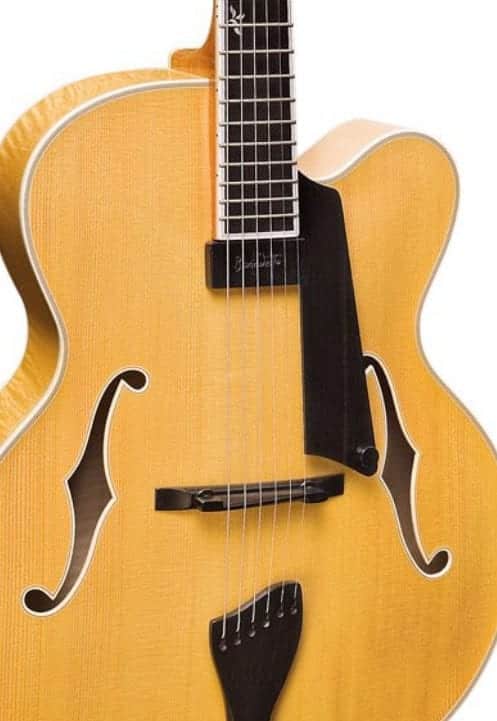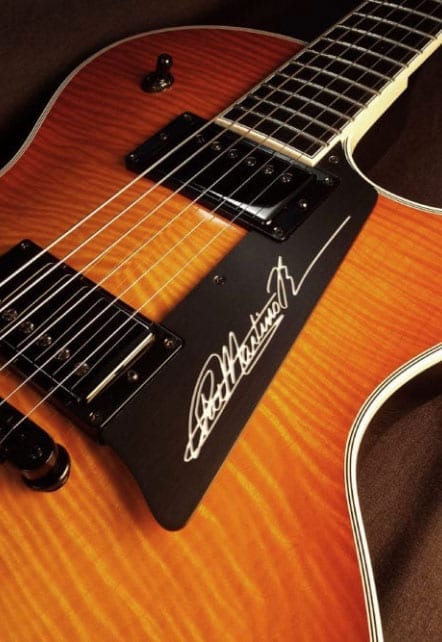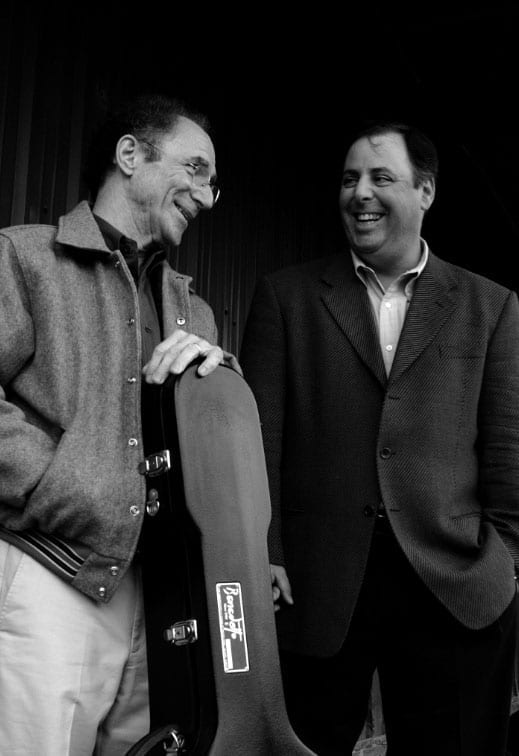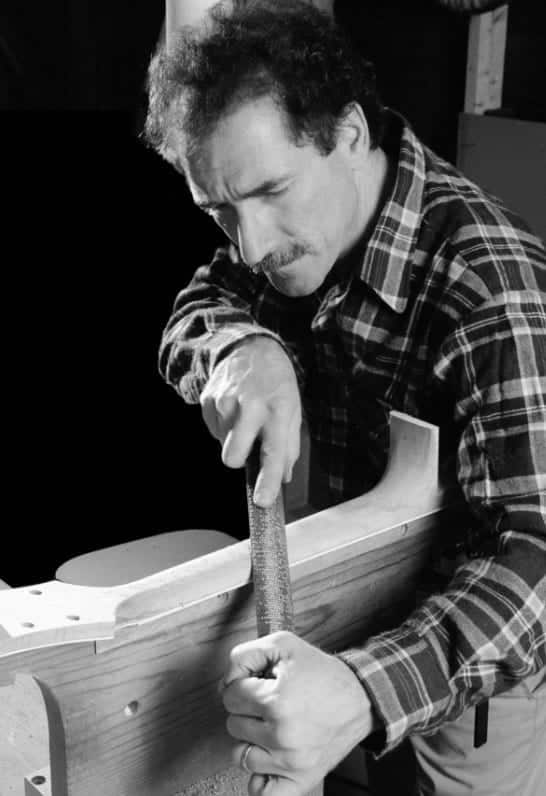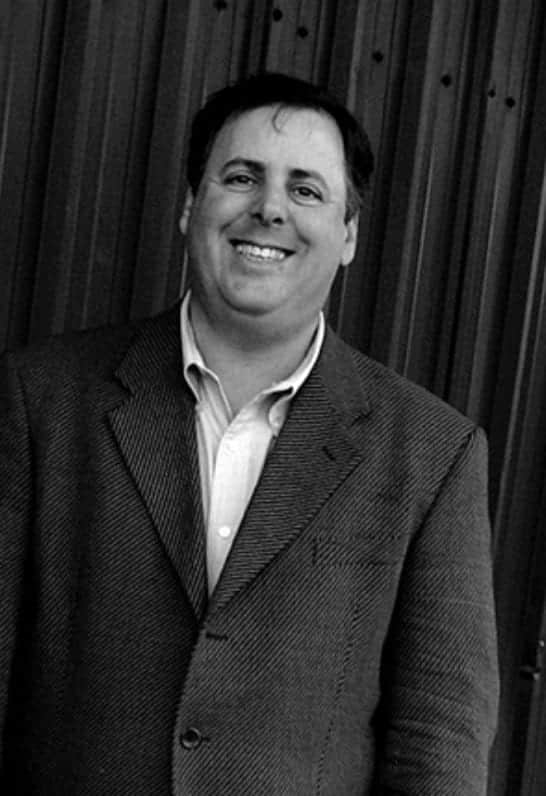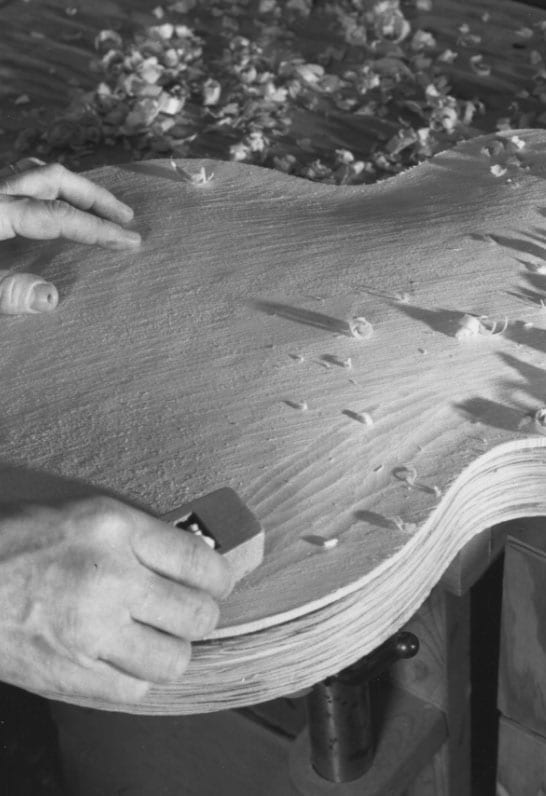In Memoriam An Elite Group of Jazz Guitar's Finest Players
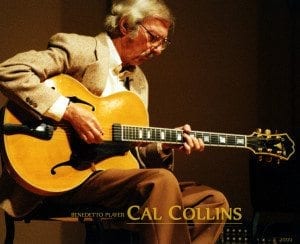
Cal Collins (1933 – 2001)
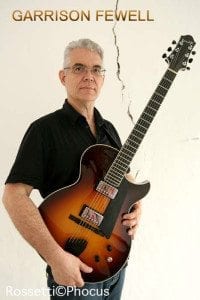
Garrison Fewell (1953 – 2015)
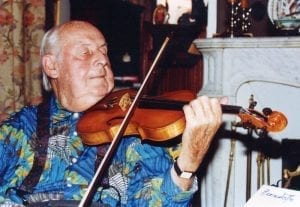
Stephane Grappelli (1908 – 1997)
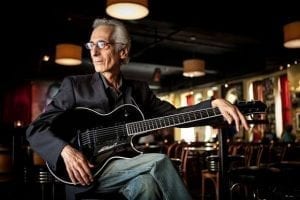
Pat Martino (1944 — 2021)
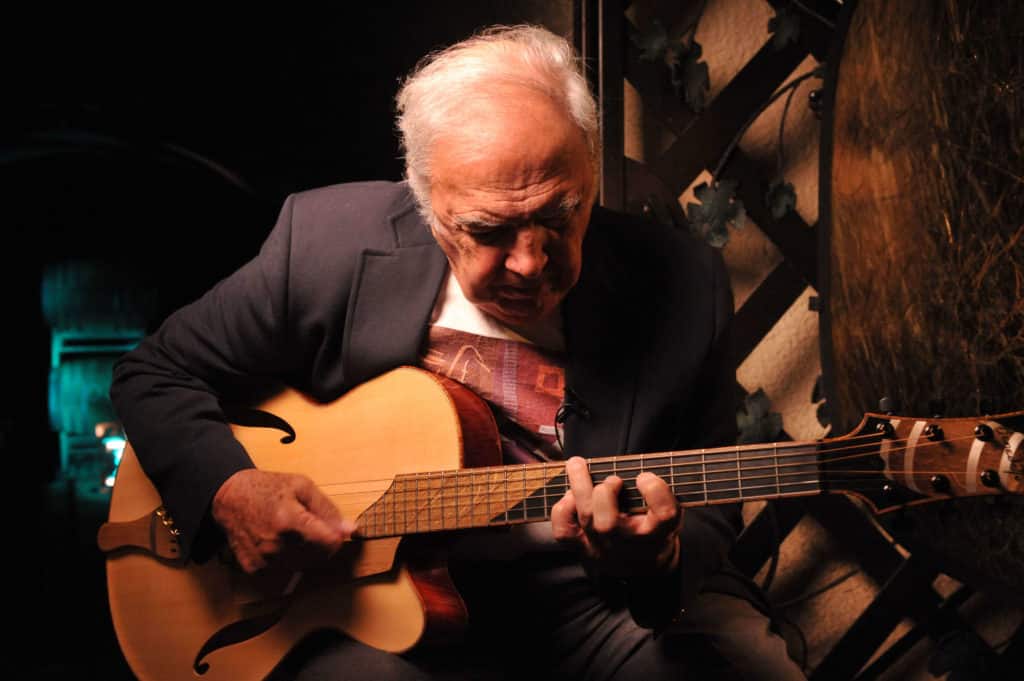
Bucky Pizzarelli (1926 – 2020)
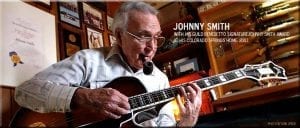
Johnny Smith (1922 – 2013)
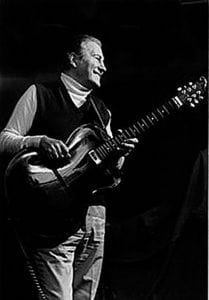
Chuck Wayne (1923 – 1997)
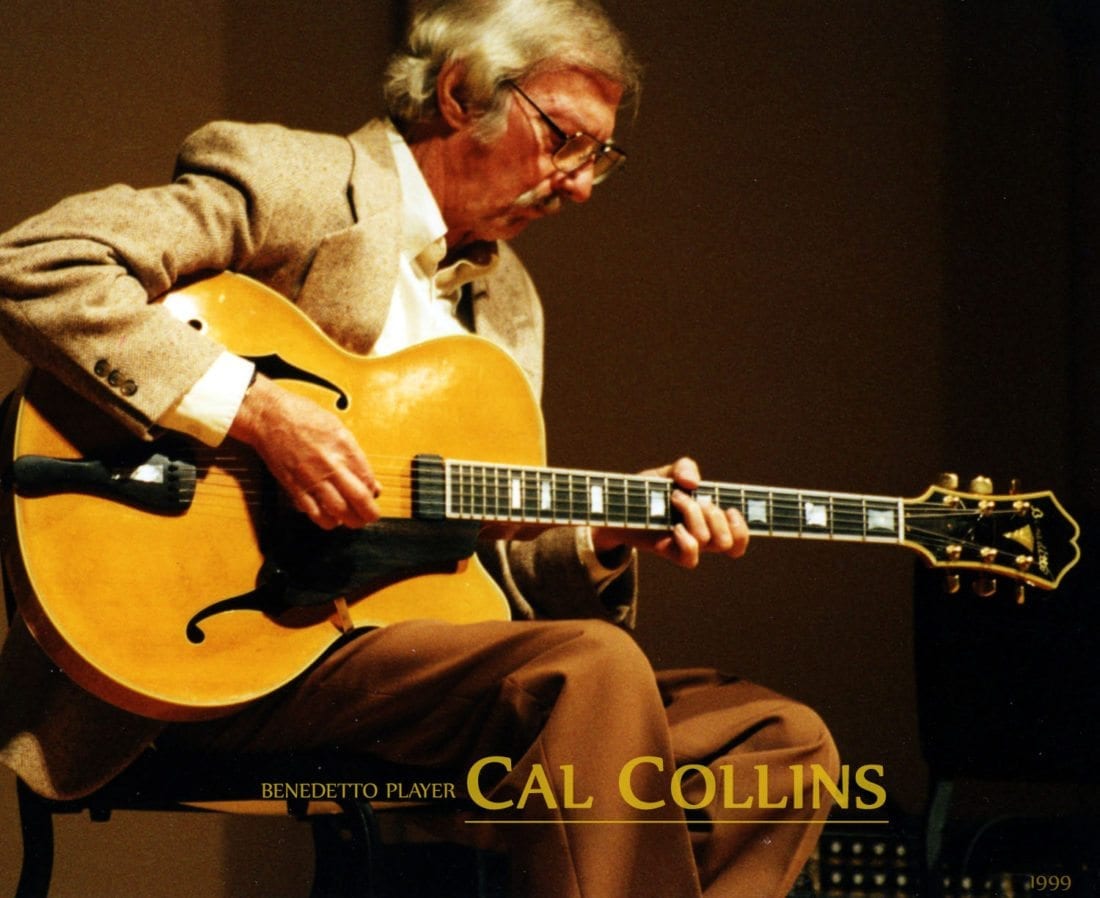
Cal Collins (1933 – 2001)
Guitar master Cal Collins, one of the best known and most beloved musicians in the Greater Cincinnati jazz scene, died of liver failure at his home in Dillsboro, Indiana in 2001. He was 68.
“He was such a great joy to everyone who knew him, not only as a musician, but he lifted your spirits just to be near him,” says jazz authority Oscar Treadwell. “There was such love in this man’s heart and it came through in his music. As soon as you heard Cal Collins, you knew it was him.”
“He was a world-renowned jazz player, he was the best,” says Mary Ellen Tanner, who frequently sang with Mr. Collins over the past 30 years. “But in addition to being a brilliant player, he was a great guy too, and that doesn’t always come in the same package.”
Mr. Collins began his musical career playing bluegrass mandolin in Medora, Ind. He switched after hearing the recordings of jazz guitar greats Django Reinhardt and Charlie Christian.
From the ’50s through the ’70s, he was a fixture in the Tristate’s thriving jazz scene. In 1976, he began a five-year stint as guitarist with Benny Goodman, one of the most demanding jobs in jazz.
Through it all, he never lost his unique fusion of down-home country and sophisticated jazz, a sound that set him apart from the jazz pack.
“He was just as at home playing a Hank Williams song as he was playing a bebop tune,” says guitarist Scotty Anderson. “To me, Cal set the standard by which all the other ones are going to be judged. But as serious as that sounds, at the same time he had such a fun-ness about his playing.”
Mr. Collins’ sense of fun and camaraderie made him popular in and out of jazz. In 1993, he toured with the multi-genre “Masters of the Steel String Guitar” tour with Doc Watson, bluegrass dobro player Jerry Douglas and the blues duo of Cephas & Wiggins.
“He was wonderful on the Masters tour,” recalls Joe Wilson, executive director of the National Council for the Traditional Arts, which produced the tour and invited Mr. Collins to play. “I called him and he said, “Yeah, it sounds like fun.’ He joined us in Chattanooga and he made friends within the first 15 minutes.”
Many jazzers would consider such a folk-oriented tour beneath them, but Mr. Collins didn’t live by such rigid rules.
“His mind wasn’t made up about everything,” Mr. Wilson says with a chuckle. “Cal woke up every morning ready for adventure. It made him a delightful traveling companion and just a really good guy to be around.”
“A great picker’
His sense of adventure earned him fans throughout music.
“He was a great picker,” says blues-rock guitar great Lonnie Mack, who occasionally jammed and double-dated with Mr. Collins while growing up in Indiana. He admired the older musician’s ability to blend styles. “He really was able to mix it all up.”
“There’s a lot of great pickers out there, some unbelievable pickers, but he was just a natural virtuoso. He just played natural stuff, mashed potatoes stuff, but it was virtuoso,” says drummer John Von Ohlen. “There was never a better guitar player than Cal Collins. . . . And I’m not saying that just because he was my friend. Sometimes he played so good it was like I didn’t know him.”
Mr. Collins helped shape a younger generation of players, especially guitarists. He gave a pre-teen Sonny Moorman formal lessons. Greg Schaber remembers a Collins workshop at Morehead State University.
Keyboardist Steve Schmidt often played with Mr. Collins at the Blue Wisp in its early years in O’Bryonville.
Forefather of jazz
“He was one of the few forefathers of jazz to my generation,” says Mr. Schmidt. “I learned so much from Cal, not even about music so much as just his attitude. … Cal communicated the real reason you play music, to express joy and to give it to other people. He kept that in him and he made sure you felt it.”
photo courtesy of player
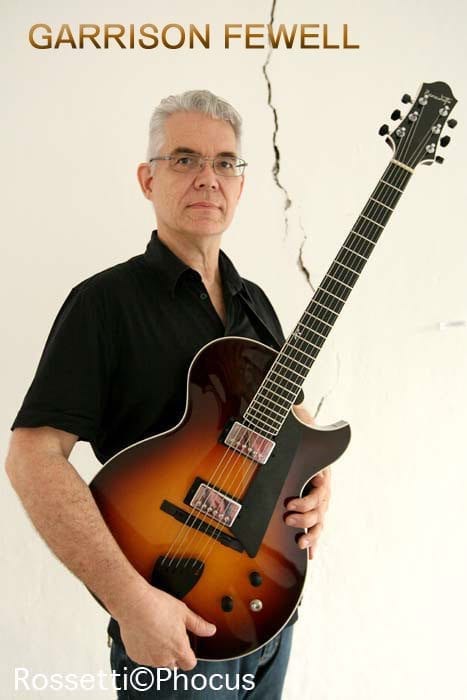
Garrison Fewell (1953 – 2015)
Garrison Fewell was a senior faculty member at the Berklee College of Music. In addition to teaching generations of some of the finest guitarists to emerge from Boston, he was a prolific player who traveled around the world performing and teaching in workshops and clinics.
He was fluent in Italian and French, and taught in over 40 conservatories in Europe. His recordings have had much critical acclaim including Guitar Player’s Editor’s Choice for Best Recording in 1996. In addition to his love of music and international culture, he was a wine expert who blogged about fine Italian wines and Burgundies!
Garrison performed on a BAMBINO model. (shown here performing in Italy 2012)
photo courtesy of player
Garrison also played a BRAVO ELITE (Serial #S2114) since May 2013.
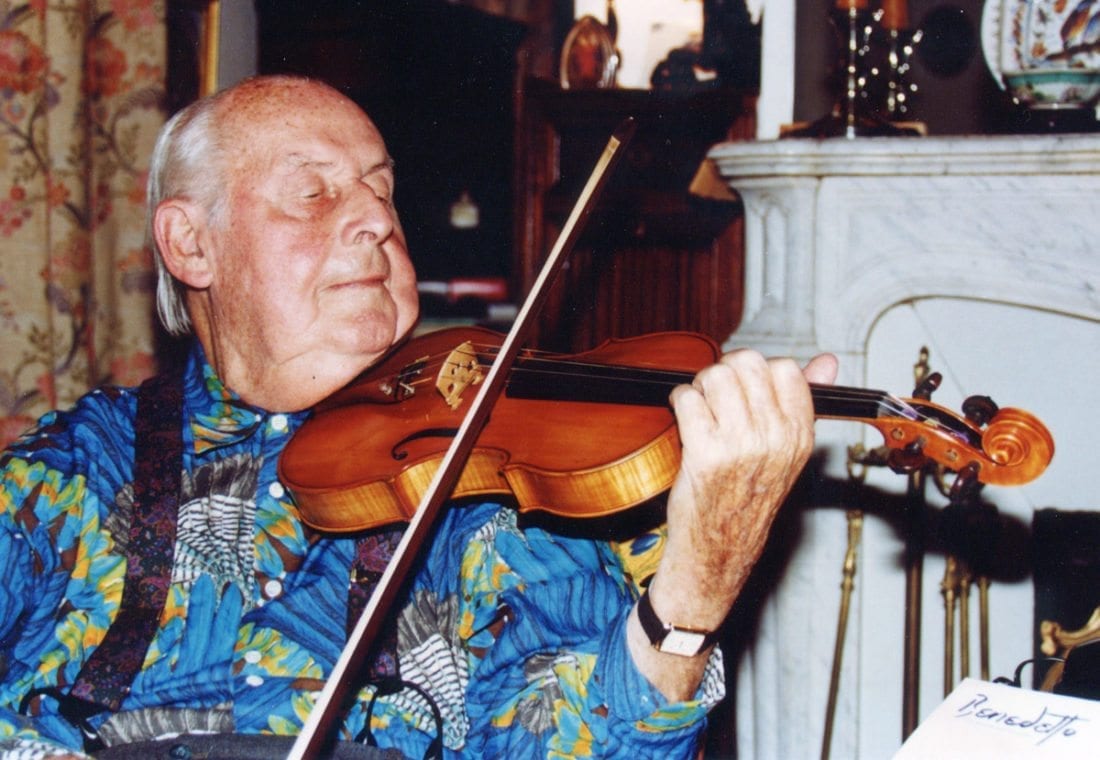
Stephane Grappelli (1908 – 1997)
One of the all-time great jazz violinists (ranking with Joe Venuti and Stuff Smith as one of the big three of pre-bop), Stéphane Grappelli‘s longevity and consistently enthusiastic playing did a great deal to establish the violin as a jazz instrument. He was originally self-taught as both a violinist and a pianist, although during 1924-28 he studied at the Paris Conservatoire. Grappelli played in movie theaters and dance bands before meeting guitarist Django Reinhardt in 1933. They hit it off musically from the start even though their lifestyles (Grappelli was sophisticated while Django was a gypsy) were very different. Together as Quintet of the Hot Club of France (comprised of violin, three acoustic guitars and bass) during 1933-39 they produced a sensational series of recordings and performances. During a London engagement in 1939, World War II broke out. Reinhardt rashly decided to return to France but Grappelli stayed in England, effectively ending the group. The violinist soon teamed up with the young pianist George Shearing in a new band that worked steadily through the war. In 1946, Grappelli and Reinhardt had the first of several reunions although they never worked together again on a regular basis (despite many new recordings). Grappelli performed throughout the 1950s and ’60s in clubs throughout Europe and, other than recordings with Duke Ellington (Violin Summit) and Joe Venuti, he remained somewhat obscure in the U.S. until he began regularly touring the world in the early ’70s. Since then Grappelli has been a constant traveler and a consistent poll-winner, remaining very open-minded without altering his swing style; he has recorded with David Grisman, Earl Hines, Bill Coleman, Larry Coryell, Oscar Peterson, Jean Luc Ponty and McCoy Tyner among many others. Active up until near the end, the increasingly frail Grappelli remained at the top of his field even when he was 89. His early recordings are all available on Classics CDs and he recorded quite extensively during his final three decades. SOURCE
Top Photo Caption: Stephane Grappelli with his 1987 Benedetto violin #140 at his home in Paris, France, 1993.
photo courtesy of player
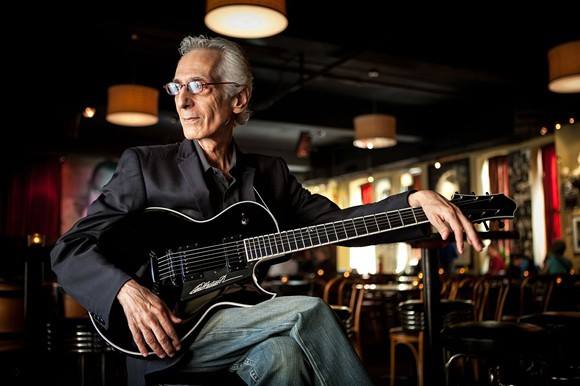
Pat Martino (1944 — 2021)
Pat Martino was an iconic figure in modern jazz and has influenced countless guitarists in all genres of music. From his early days of professional performance beginning in 1961, Pat shared the stage with every major jazz figure of our time and had recorded on every major record label including: Blue Note, Vanguard, Warner Brothers and Columbia. His life was a study in discipline and passion, and has been the subject of books, articles, documentaries, and films. His love of music was equalled by his devotion to furthering the understanding of guitar. He was a longtime faculty member at the University of the Arts in Philadelphia and traveled the world as a clinician and private teacher.
Pat played a “Pat Martino signature” Benedetto model. Pat’s wife ‘Aya frequently accompanied Pat, originally with her Bambino Deluxe model, but currently with a “Pat Martino signature” Benedetto, too.
“Martino’s cool tone spins off vicious lines of head-spinning dexterity.” – JAZZIZ
photo courtesy of player
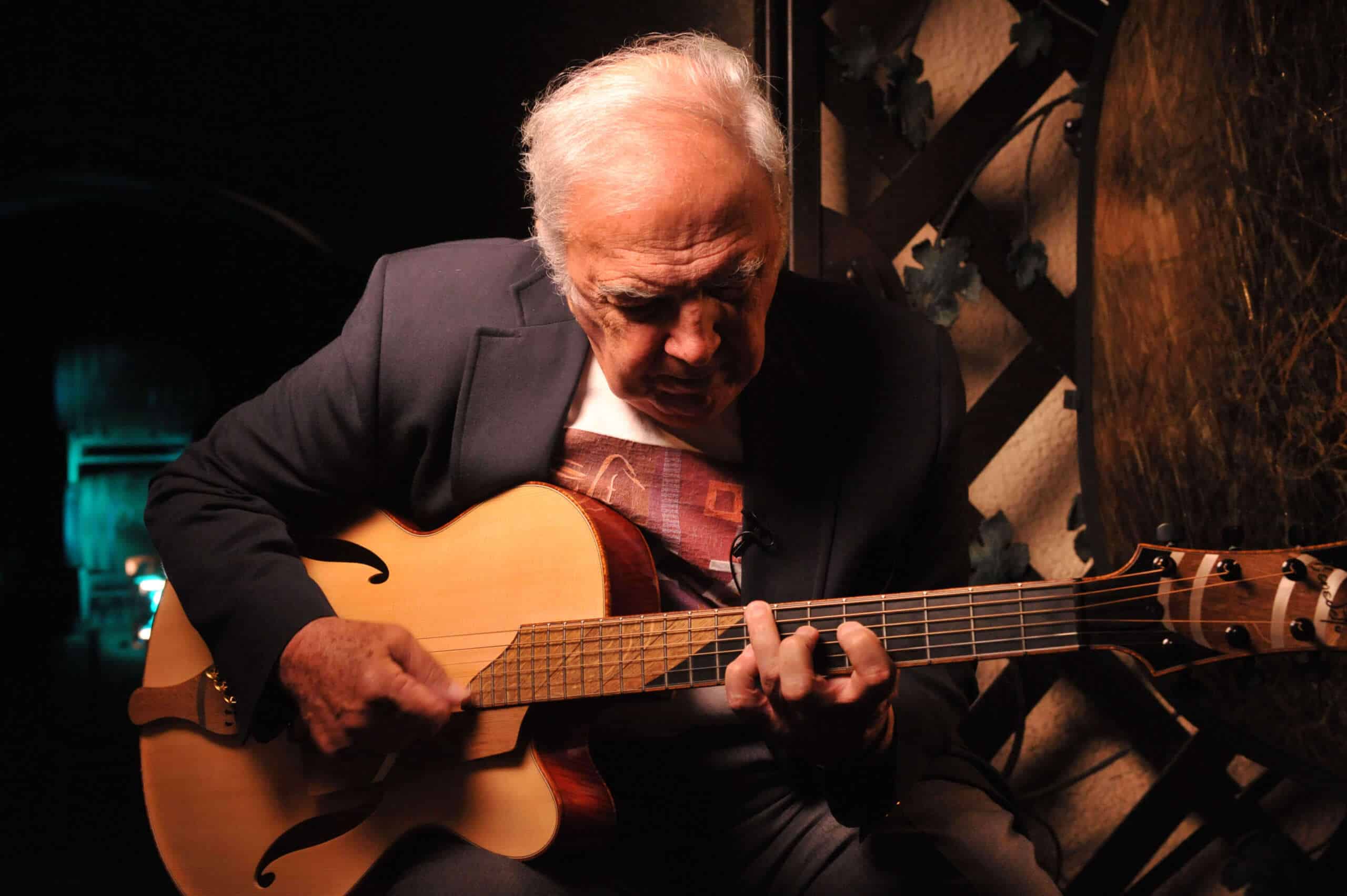
Bucky Pizzarelli (1926 – 2020)
For more than seven decades, the legendary Bucky Pizzarelli has had a stellar career. “The complete jazz musician”, he was a fixture in jazz and the studios since the early ‘50s. The list of big bands and vocalists with whom Bucky has performed and recorded reads like a veritable Who’s Who of Jazz. One of the era’s most solid rhythm players, Pizzarelli was in high demand, playing and touring with Benny Goodman, Zoot Sims, Bud Freeman, and Stephane Grappelli, and, later, recording with George Van Eps, Carl Kress and George Barnes. His superior mastery of the seven-string guitar is unparalleled. The beloved guitarist has developed a very personal style that sets him apart. He lives in Saddle River, New Jersey, with his wife of nearly 70 years, Ruth.
Thank you, Bucky, for being a Benedetto Player (our first!) since 1978—37 years!
“…moves effortlessly from the daunting format of the solo guitar to playing solid, swinging rhythm and single string solos…”
photo courtesy of player
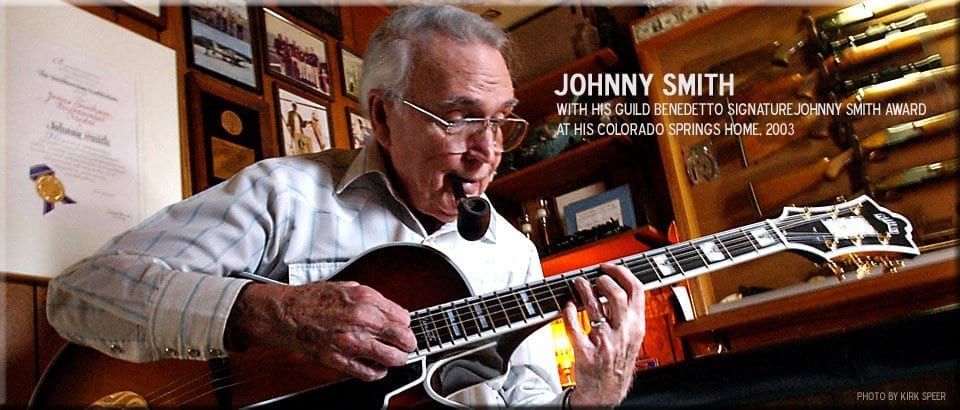
Johnny Smith (1922 – 2013)
“An extraordinary virtuoso. As far as I’m concerned, no one in the world plays the guitar better than he. They might play it differently, but nobody plays better.” – Barney Kessel
“Man, I can never be that perfect. No one plays like Johnny Smith.” – Wes Montgomery
Johnny Smith is remembered affectionately by many jazz listeners for his huge hit ‘Moonlight in Vermont’ in 1952. Meanwhile, rock guitarists celebrate him as the composer of the Ventures’ instrumental hit ‘Walk, Don’t Run’. Serious jazz guitarists, however, still acknowledge him as the benchmark of musicianship by which all other jazz guitarists are measured. His superior technical virtuosity, quality of tone and musical sophistication remain unrivaled on the plectrum jazz guitar.
After stepping out of the shadows as a largely anonymous studio musician, he became the most revered guitarist on the New York jazz scene during the golden era of the 1950s. Johnny Smith was a regular feature on the bill at the major jazz venues, such as Birdland and the Embers, playing opposite legendary figures including Charlie Parker, Dizzy Gillespie, Count Basie, Lester Young, Miles Davis, Billie Holiday, Art Tatum and George Shearing.
His meticulous approach to his musicianship, immaculately smooth and clean playing, full-bodied tone, pianistic chords and three-octave flourishes rendered his guitar style unique. His musical vision and technical virtuosity enabled him to explore the guitar fingerboard in ways that had not been previously realized, and his premeditated chord-melody arrangements possessed levels of sophistication that had not hitherto existed outside of the realm of the classical guitar. He was revered as the jazz guitarist’s jazz guitarist.
For many jazz guitarists, Johnny Smith’s influential role in raising the standards of technique and musical sophistication on the jazz guitar places him alongside Django Reinhardt, Charlie Christian and Wes Montgomery as one of the legendary and most significant figures in the development of the jazz guitar. An extraordinary virtuoso.
photo courtesy of player
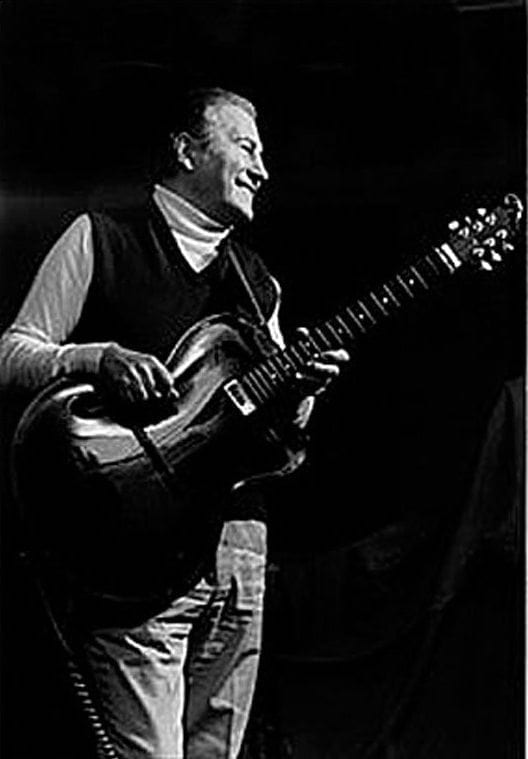
Chuck Wayne (1923 – 1997)
Although he often paid his bills with non-jazz pursuits, native New Yorker Chuck Wayne was an expressive and talented, if underexposed, bebop guitarist along the lines of Barney Kessel, Tal Farlow, Jimmy Raney, and Johnny Smith. Wayne was never a huge name in the jazz world, but he did cross paths with major jazzmen like Dizzy Gillespie, Zoot Sims, and Woody Herman — and improvisers who were familiar with his swinging yet lyrical playing (a relatively small group) swore by him. Wayne was capable of playing more than one style of jazz; he played swing before he played bop, and he could handle Dixieland as well. But bop was his preference, and that’s the style that he is best known for in jazz circles.
Wayne was born Charles Jagelka in the Big Apple on February 27, 1923 — that’s the name that appeared on his birth certificate — but when he pursued a career in music, he realized it would be easier and more convenient to go by Chuck Wayne. The improviser didn’t start out as a guitarist; as a teenager in the late ’30s, he played swing on the mandolin. But by the early ’40s (when he was hired a sideman by swing pianist Clarence Profit), Wayne had switched to the guitar and made it his primary instrument. After spending some time in the United States Army, Wayne became quite active on midtown Manhattan’s legendary 52nd Street scene of the ’40s — and that was where he made the transition from swing to bebop. Wayne, whose early influences included Oscar Moore (of the Nat King Cole Trio) and the seminal Charlie Christian, first heard Charlie Parker around 1944; it didn’t take him long to take the bebop plunge.
The mid-’40s found Wayne playing with Woody Herman’s big band, and 52nd Street was where he played with trumpeter Dizzy Gillespie. Wayne (who played the banjo and the balalaika as secondary instruments) was a sideman for pianist George Shearing from 1949-1952, and in the ’50s he recorded some LPs for the Progressive label as a leader. But it was also during the ’50s that Wayne had a lot of non-jazz activities, which ranged from writing for Broadway to working as a staff musician for CBS-TV to a stint with singer Tony Bennett (who isn’t jazz per se but is a fine example of jazz-influenced traditional pop). However, Wayne never gave up bebop, and he recorded a handful of bop-oriented albums in the ’60s and ’70s (two more decades that found him dividing his time between jazz and non-jazz pursuits). The ’80s found Wayne teaching at the Westchester Conservatory of Music in suburban White Plains, NY (just outside of the Big Apple), and he continued to teach and play in the ’90s. On July 29, 1997, Wayne passed away at the age of 74.
photo courtesy of player
